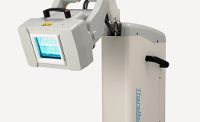Journal of Dermatological Science January 29, 2019
Optimum wavelength characteristics for phototherapy utilizing deep ultraviolet light-emitting diodes
Hideyuki Masuda1,2, Makoto Kimura1,2, Akimichi Morita1
1 Department of Geriatric and Environmental Dermatology, Nagoya City University, Graduate School of Medical Sciences, Nagoya, Japan
2 USHIO INC, Tokyo, Japan
紫外線治療器の光源にはランプが使われてきたが、一般照明や産業用と同じくLED化の流れがある。LEDには波長の選択性、長寿命、低消費電力、水銀フリーといった数多くのメリットがある一方、従来光源との分光分布の違いに関する課題がある。ナローバンドUVBやエキシマライトの分光分布の半値幅が5nm以下であるのに対し、深紫外LEDは原理上15 nm程度の半値幅を有する。300nm周辺の紫外線に対するDNA吸収係数は変化が非常に大きいため、わずかな波長特性の違いでも大きな臨床効果の違いに繋がる。そこで我々は、最適な光学特性について研究を行った。T細胞関連疾患のin-vitroモデルとしてJurkat細胞を使用し、アポトーシスとDNA損傷を調べた。
Lamps have been used as the light source for ultraviolet phototherapy devices. As with general lighting and industrial applications, there is a trend toward LEDs. LEDs have numerous advantages such as wavelength selectivity, long life, low power consumption, and mercury-free. On the other hand, there are issues related to differences in spectral distribution from conventional light sources. While narrowband UVB and excimer light have a full width half maximum (FWHM) of less than 5 nm, deep UV LEDs in principle have a width of about 15 nm. We investigated the optimum optical properties using Jurkat cells as an in-vitro model of T cell-associated diseases and examined apoptosis and DNA damage.
論文はコチラ(外部サイトへジャンプします)
Copyright © USHIO INC. All Rights Reserved

